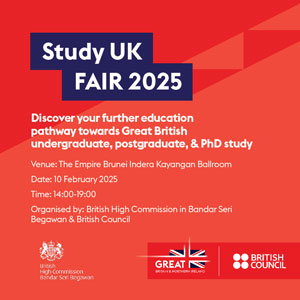ANN/THE STAR – Ann Wong used to assist her father’s tannery in Port Klang, Selangor in Malaysia when she was in primary school.
She said she and her siblings would spend their school holidays by helping her father at his factory back in 1980s.
She added that they grew up in a conventional Chinese home and their family is very close.
“Our parents worked hard and we (children) would help with simple tasks like typing, packing leather goods, and measuring or cutting leather strips. My siblings and I practically grew up rolling in leather,” said Wong, 42, in an interview at her workshop in Port Klang, Selangor.
Wong’s journey, from helping out in her father’s workshop to becoming a pivotal part of the family-run business, Kelang Leather, is inspiring. She holds a degree in accountancy but her interest in the family business led her to decide to leave her corporate career to focus on the tannery.
“I have always been fascinated by the leather business and how to make it profitable.
“I’ve to look at global raw hide prices, imported leather tanning and finishing chemicals, leather machinery and most importantly, how to produce leather.
“To me, this is much more interesting than a desk job. Ironically, till today, my job still sees me doing costing every day,” she said.
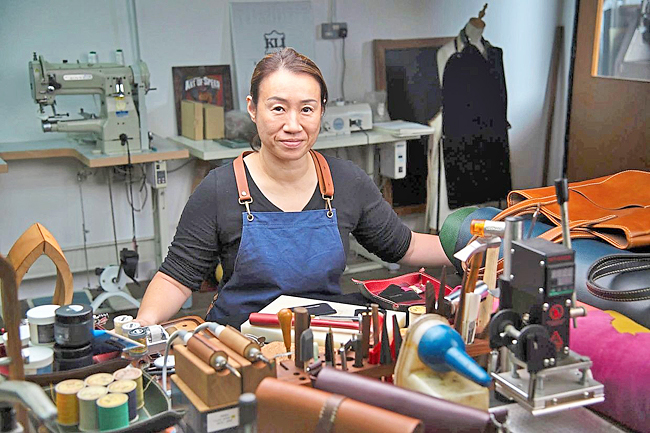
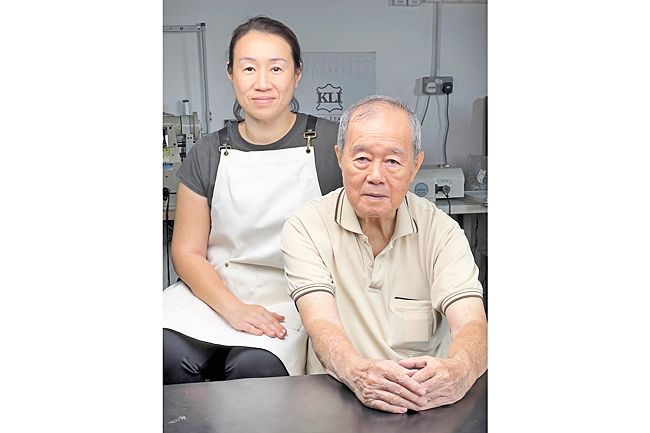
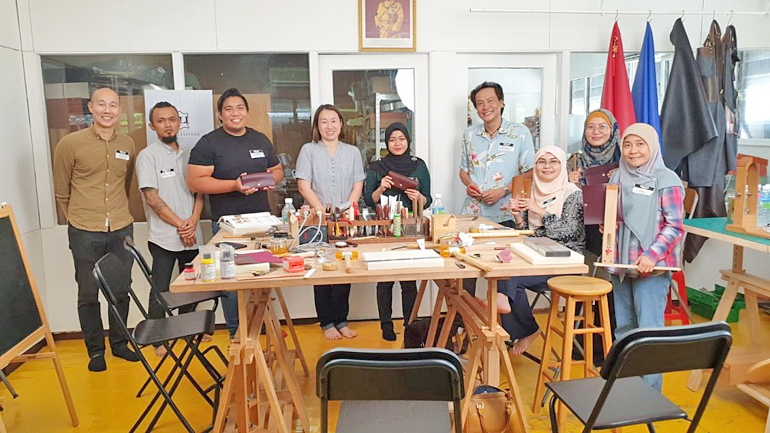
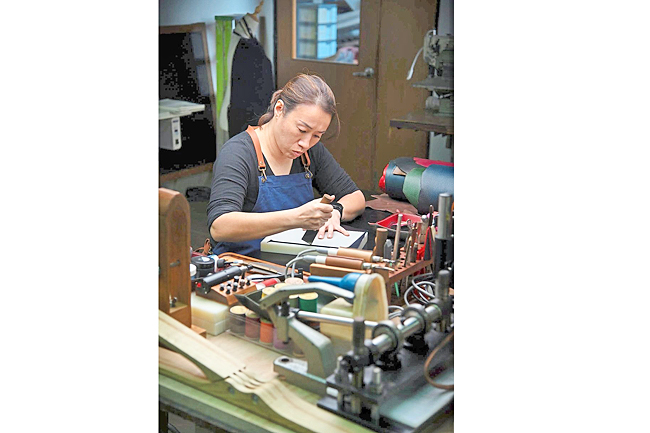
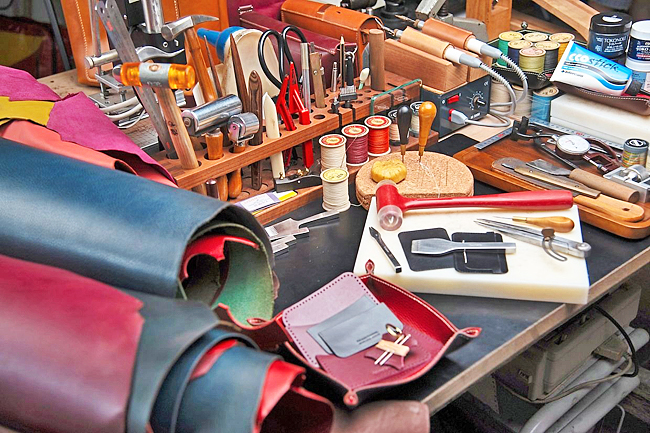
Today, Wong crafts a range of leather items like wallets, handbags, and belts and the fact that the industry is male-dominated doesn’t faze her one bit; instead she talks about the increasing number of women breaking out in the leather trade.
“Being able to make leather products is a great privilege. And many women are breaking barriers and showcasing exceptional design, crafting, and management skills.
“As with any field, women are proving their mettle, crafting high-quality goods, leading businesses, and sharing their creativity with others.
“In this day and age where everything moves very fast, leathercrafting has taught me to be patient and resilient; sort of like turning a leather sheet into a usable product… it is a long but very rewarding process.”
FROM TANNERY TO ARTISTRY
Established in 1983, Kelang Leather was founded by Wong’s father, German-trained leathersmith and tanner Wong Shang Teck.
In the 1980s and 1990s, the tannery used to employ almost 100 workers, producing footwear for the Royal Malaysia Police and other small leather goods.
“Fast forward 40 years later, the demand for leather raw materials has diminished as manufacturing of leather and leather goods for the commercial market is no longer economically feasible in Malaysia due to the rising cost of labour and material.
“Many consumers find it cheaper to buy leather products from China. The situation is very much affected by the limited supply of factory workers in our country too,” shared Wong, who currently runs the business with only eight staff.
In 2018, due to poor health, Shang Teck passed the business down to Wong and her younger brother, Alec.
Wong concedes that promoting local leather products for the global market has significant challenges.
For one, established luxury brands from countries like Italy, France, and Britain boast heritage, craftsmanship, and prestige synonymous with luxury.
“Also, for big brands, a majority of its cost is spent on marketing and advertising, aside from maintaining the quality of the products they sell.”
She is thankful for government campaigns like Buy Malaysian Products which encourage consumers to support local businesses and products, thereby boosting the domestic economy. When people buy Malaysian-made products, it directly contributes to job creation and economic growth within the country.
“Many homegrown companies have a policy of buying from Malaysian manufacturers.
“For example, the Buy Malaysian Products campaign and tax incentives for manufacturers can help lower the cost of manufacturing.”
The mother of two adds that this will enable local leathersmiths to sustain their production, using high-quality leather and not man-made “lookalikes”. Real leather, she said, is not just more versatile but also more durable.
“Leather is not expensive if you consider how long-lasting it is if well maintained.
“If leathersmiths choose to use alternative materials, they will not be considered leather crafters,” said Wong, who shares photos of her products on Instagram.
The rawhide used in Kelang Leather’s creations are sourced from different countries that specialise in specific types of leather.
For example, India offers buffalo leathers suitable for heavy-duty applications such as for making boots and shoe soles.
“Italy uses top quality leather hides – with vegetable tanning (plant-based chemicals) – which are more widely used for high street fashion products. These items can fetch a higher selling price.
“Meanwhile, France and Pakistan export goat and sheep leather – thin and fine-grained – suitable for many types of small leather goods and garments.”
She added that leather products are sustainable as they are byproducts of the food industry that are up-cycled.
“If these leathers were not processed and repurposed into belts, bags and shoes, these skins will end up in the landfills.
“So, in the spirit of sustainability and environmentally-friendly purchases, buy something made out of genuine leather today,” she said.
Over the years, the family-owned tannery has diversified its operations and now specialises in leather sheets, tools, accessories, adhesives, and leather care products.
They also run workshops and training sessions for leather crafters. Aside from managing the business and crafting leather goods, Wong conducts workshops that cover the nuts and bolts of leather crafting, from identifying leather types, introducing crafting tools, pattern-making, stitching, to finishing techniques.
CRAFTING LEATHER MASTERY
“We have been running workshops since 2018. So far, we have trained over 100 students from all walks of life, from students to fashion designers, craft lovers and retirees.
“Our aim is to teach more and more people the skill of leather crafting.
“Aside from being a hobby, this is a trade that can be done from home. With the right tools and tabletop-sized machines, you can custom make any product or design that you heart desires – from horse saddles, quivers for archery, knife sheaths, to wallets, belts, handbags and shoes. The possibilities are endless and finished products are easily sold through online craft stores like Etsy, or at local craft markets.”
Leather crafting, she said, provides an outlet for one’s creativity and artistic skills that we otherwise may not have a chance to express.
“The sense of achievement from creating a product by hand is very fulfilling and satisfying. Some say it is therapeutic.”
Wong’s journey in the tannery her father built stands out and is one of the few remaining time-honoured crafts that are standing proud.
Her story is a reminder that innovation can flourish even in the most traditional of crafts. – Sheela Chandran






